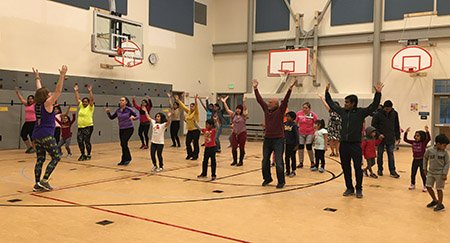Field Day Fitness
For many schools, Field Day is one of the most memorable days of the year, and it’s a great addition to Every Kid Healthy Week. Let the games begin!
Read More Family Fitness Nights are a great way to extend healthy messages from school to home and educate families about the importance of physical fitness. Family Fitness Nights expose students and families to inexpensive, fun and easy physical activities that can be enjoyed together at home, as well as help families connect to fitness resources in the community. These nights can also be an opportunity to showcase your school’s physical activity initiatives so parents understand how your school is helping students stay fit.
Family Fitness Nights are a great way to extend healthy messages from school to home and educate families about the importance of physical fitness. Family Fitness Nights expose students and families to inexpensive, fun and easy physical activities that can be enjoyed together at home, as well as help families connect to fitness resources in the community. These nights can also be an opportunity to showcase your school’s physical activity initiatives so parents understand how your school is helping students stay fit.
Double and triple check your activity stations beforehand to ensure they have all needed materials. Encourage families to go to all stations by creating a “passport” – When a family completes each activity, they get a mark on their passport. Once a family has completed all activities, they turn in their card for a chance to win a healthy prize at the end of the night.
Spice stations up by adding music. Get your heart rate up by movin’ and groovin’ to the beat!
Too busy to dedicate another night for a school event? Consider combining Family Fitness Night with an existing event, such as a Literacy, Math or STEM nights at your school. Find ways to show families how physical activity can be linked with classroom-based learning.
Make sure each activity is low-cost and requires little equipment to participate. Encouraging easy, hassle-free ideas at this event will encourage the behavior at home.
Coordinate your event so it coincides with a particular monthly celebration, like Heart Health Month (February), National Physical Fitness and Sports Month (May) or Walk/Bike to School Day (October/May).
Use Family Fitness Night as a kick-off to a family activity challenge during spring or summer break, like Family Activity Points.
Make sure participants have easy access to water. If the fountain isn’t functioning, seek donated water bottles from a local store or remind participants to bring their own bottles.
Always have a backup plan for outdoor activities in case the weather gets bad.
Send a thank-you note to all volunteers after the event.
Categories: Physical Activity & Play, At School, Digital Resource